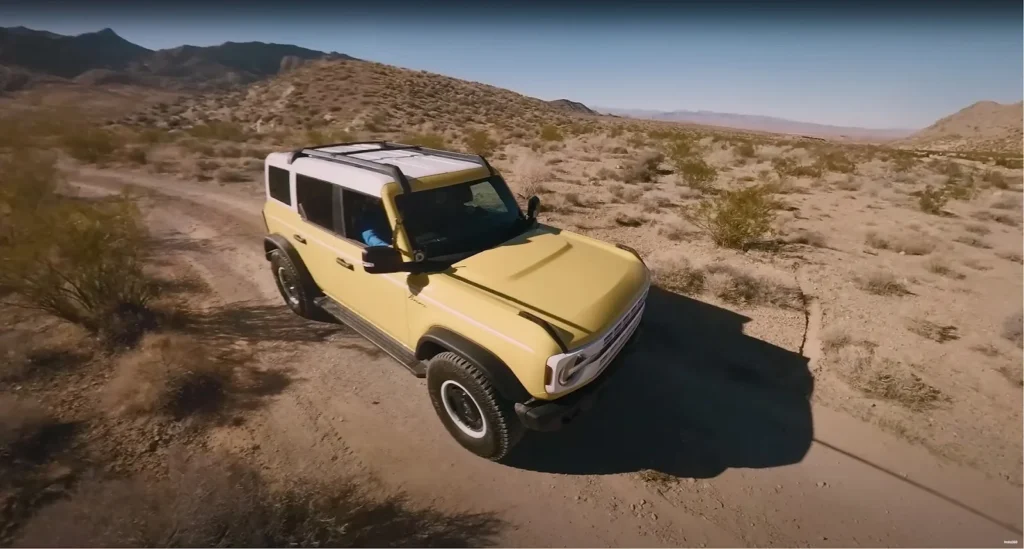Imagine transforming ordinary 360 car footage into immersive, interactive virtual road trip experiences. With advancements in technology, you can now relive your favorite drives or explore new destinations from the comfort of your home. This innovative approach allows you to turn raw footage into a dynamic journey that feels almost as real as being on the road.
In this article, you’ll discover how to create these engaging experiences, the tools you’ll need, and the possibilities they unlock. Whether you’re a travel enthusiast, a content creator, or just curious about the potential of 360 video, this guide will show you how to breathe new life into your recordings and share them in a whole new way.
You might also like: A fresh take that complements what you just read.
The Technology Behind 360 Car Footage
Capturing and transforming 360 car footage into an interactive experience requires expertise in both hardware and software. Each component contributes to creating detailed, immersive visual content.
Basics Of 360-Degree Cameras
These cameras use multiple lenses to record panoramic views, stitching them into one seamless video. Sensors inside the camera capture visuals from all directions at once, preventing blind spots. Resolution varies by model, with options reaching up to 11K, ensuring detailed imagery.
Mounting techniques directly affect results. Roof mounts offer wide perspectives, while dashboard positions provide road-centered angles. Stabilization features help reduce motion blur during high-speed recording.
Software Tools For Virtual Transformation
Footage captured using a 360 car camera can be transformed into immersive, interactive experiences through advanced software tools. Specialized editing programs help convert raw 360 recordings into navigable virtual scenes that highlight every angle of your drive.
Mapping tools align footage with real-world coordinates, creating spatial accuracy for applications like virtual tours or training simulations. Keyframing allows you to add dynamic motion paths, making the most of the wide perspective captured by your 360 car camera.
To ensure seamless playback across devices, compression software reduces file sizes without sacrificing clarity. For added depth, you can embed interactive elements like annotations, clickable hotspots, or guided cues—especially useful for VR or mobile-friendly content. These tools unlock the full storytelling power of a 360 car camera, turning routine recordings into immersive narratives.
Benefits Of Interactive Virtual Road Trip Experiences
Enhanced Immersion For Users
360° video technology allows you to engage with full-sphere visuals that replicate real-world environments. High resolutions between 4K and 8K provide sharp and detailed imagery, giving depth to your virtual road trip.
Stabilized footage makes movements smooth, reducing disruptions and enabling a realistic exploration of every angle. Such interactivity creates a more personal and engaging experience compared to traditional static videos.
Educational And Training Applications
Virtual road trips can act as cost-effective alternatives to physical field trips. You can explore cultural landmarks, natural wonders, or historical sites in a secure, accessible way.
Engaging visuals hold your attention, which is key to improving information retention. During remote or hybrid learning, such experiences keep students actively involved in ways traditional methods don’t.
Marketing and Tourism Opportunities
Interactive virtual tours offer a creative way to promote destinations or products. You can showcase scenic drives, unique landscapes, or vehicle interiors to attract diverse audiences.
By allowing viewers to virtually explore experiences, you generate curiosity and interest, driving higher engagement. The innovative format helps your campaigns stand out in competitive digital spaces.
Step-By-Step Process Of Turning 360 Car Footage Into Virtual Experiences
Transforming 360 car footage into a virtual experience requires precise capturing, thoughtful editing, interactive design, and optimized sharing. Each stage ensures a seamless and engaging outcome.
Capturing High-Quality 360 Video
Use a 360-degree camera capable of full-sphere recording with high resolution between 4K and 8K. Stabilization features reduce motion blur for smoother results.
Position the camera securely inside or on top of the vehicle to capture either interior or exterior perspectives. For consistency, drive the entire route without interrupting the recording.
Editing And Enhancing The Footage
Combine lens outputs into a seamless spherical video using stitching software. Apply post-process adjustments, such as tweaking brightness and contrast, and further stabilizing the footage.
Eliminate visible camera equipment by masking it with algorithms. Additional edits can include trimming or overlaying audio tracks, like music or narration, to enrich the video.
Adding Interactive Elements
Incorporate clickable markers or hotspots to enable exploration within the video. Add overlays such as text or images to deliver context or supplementary details.
Use tools supporting 360-degree interaction, letting viewers rotate their viewpoint or switch seamlessly between scenes.
Publishing And Sharing The Final Experience
Export the completed video in formats compatible with web browsers, VR headsets, and mobile devices. Whether you’re editing footage from an Insta360 camera or another 360 device, make sure your export settings preserve the immersive quality.
Challenges And Limitations
Turning 360-degree car footage into virtual road trips requires overcoming several obstacles. Issues related to technology, costs, and practicality affect the creation of immersive experiences.
Technical Hurdles
Compatibility between 360 video platforms remains inconsistent. Disparate coding standards reduce cross-platform functionality, complicating seamless playback.
High-resolution content demands substantial processing power. Editing and viewing on low-spec systems often result in lag or reduced quality.
Motion tracking often struggles to keep pace with user movements. Delays between actions and on-screen responses can disrupt immersion and cause discomfort.
Image stitching presents another challenge. Footage from moving vehicles frequently suffers from distortions unless advanced stabilization tools are applied.
Cost Considerations
Investments in equipment and software for producing interactive VR content can strain budgets. High-end 360 cameras with 4K+ resolution are priced well beyond standard recording devices.
Development costs for interactive experiences add further expenses. Skilled developers and the design of intuitive software interfaces require significant funding.
Bandwidth fees for hosting large video files also merit consideration. Streaming high-resolution 360 content consumes resources, especially for wider audience reach.
Potential Solutions
Improving camera sensors and stitching algorithms achieves smoother footage production. Stabilization technologies enhance output from mobile environments.
Efforts to standardize VR content across devices could simplify user experiences. Broader compatibility offers easier integration for creators.
Lighter, more affordable VR headsets are entering the market. These reduce entry costs and improve comfort for longer use periods.
Interactive tools on video-sharing platforms allow wider distribution. Hosting immersive experiences becomes more accessible without custom streaming solutions.
Future Of Interactive Virtual Road Trips
Interactive virtual road trips redefine traditional travel by merging 360 car footage with immersive media. This approach allows you to explore destinations dynamically, creating unique user-driven experiences.
Innovations In Technology
Advancements in camera hardware and VR environments make these experiences possible. High-resolution 360 cameras integrate lenses and stitching algorithms to produce seamless, spherical videos. Stabilization tech reduces motion deviations caused by driving, delivering smooth visuals. Compact camera designs simplify in-car mounting, ensuring comprehensive scene capture. When paired with VR interfaces, users can control perspectives or interact with digital touchpoints, transforming passive videos into active experiences.
Increasing Accessibility And Adoption
Immersive road trip videos attract wider audiences through enhanced device compatibility and online platforms. Growing affordability of VR headsets lowers barriers for entry, making participation more inclusive. Studies highlight rising consumer reliance on virtual experiences for decision-making, like previewing locations or evaluating services remotely. Virtual tourism offers accessibility to destinations for those unable to travel physically, broadening global exploration opportunities.
Conclusion
Transforming 360 car footage into interactive virtual road trip experiences opens up endless possibilities for creativity, connection, and exploration. With the right tools and techniques, you can turn ordinary drives into captivating journeys that engage and inspire audiences in ways traditional media cannot.
As technology continues to advance, these immersive experiences will only become more accessible and impactful. Whether you’re a travel enthusiast, content creator, or educator, embracing this innovative approach can redefine how you share stories, explore destinations, and connect with others.
Want more insights like this? Head over to Management Works Media and start exploring.






